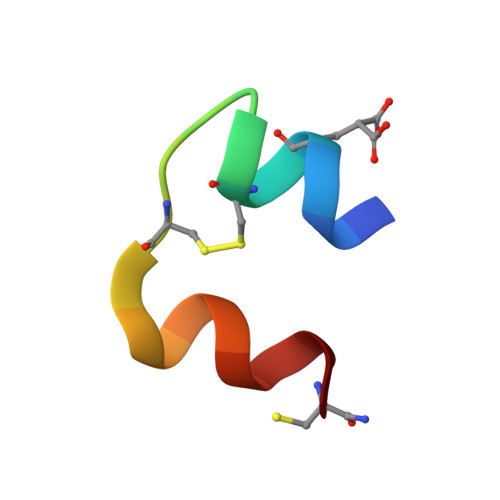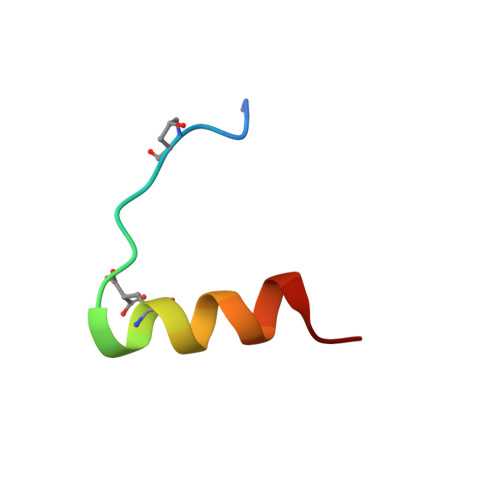A minimized human insulin-receptor-binding motif revealed in a Conus geographus venom insulin.
Menting, J.G., Gajewiak, J., MacRaild, C.A., Chou, D.H., Disotuar, M.M., Smith, N.A., Miller, C., Erchegyi, J., Rivier, J.E., Olivera, B.M., Forbes, B.E., Smith, B.J., Norton, R.S., Safavi-Hemami, H., Lawrence, M.C.(2016) Nat Struct Mol Biol 23: 916-920
- PubMed: 27617429
- DOI: https://doi.org/10.1038/nsmb.3292
- Primary Citation of Related Structures:
5JYQ - PubMed Abstract:
Insulins in the venom of certain fish-hunting cone snails facilitate prey capture by rapidly inducing hypoglycemic shock. One such insulin, Conus geographus G1 (Con-Ins G1), is the smallest known insulin found in nature and lacks the C-terminal segment of the B chain that, in human insulin, mediates engagement of the insulin receptor and assembly of the hormone's hexameric storage form. Removal of this segment (residues B23-B30) in human insulin results in substantial loss of receptor affinity. Here, we found that Con-Ins G1 is monomeric, strongly binds the human insulin receptor and activates receptor signaling. Con-Ins G1 thus is a naturally occurring B-chain-minimized mimetic of human insulin. Our crystal structure of Con-Ins G1 reveals a tertiary structure highly similar to that of human insulin and indicates how Con-Ins G1's lack of an equivalent to the key receptor-engaging residue Phe B24 is mitigated. These findings may facilitate efforts to design ultrarapid-acting therapeutic insulins.
Organizational Affiliation:
Walter and Eliza Hall Institute of Medical Research, Parkville, Victoria, Australia.



















